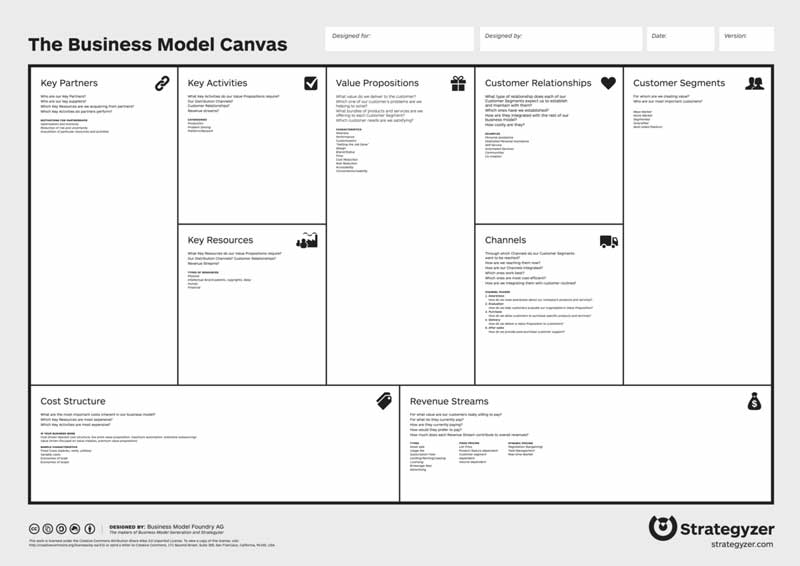The business model canvas (BMC) is a popular framework invented by Alex Osterwalder for visually representing a company’s core business model on a single page. This article will provide an in-depth explanation of the BMC, including an overview of business models in general, a walkthrough of the nine key components of the BMC, and examples for applying it to a hypothetical furniture business.
Introduction to Business Models
A business model essentially depicts how a company creates, delivers, and captures value. It answers critical questions like who the customers are, what value proposition is offered to them, and how revenue is generated from the value created. Visually mapping out different business models on paper makes it easier to communicate and understand a business. The BMC is one such powerful, visual business model representation.

Overview of the Business Model Canvas
The purpose of the BMC is to visually articulate a company’s value proposition and key business components comprehensively in a single chart. The BMC is laid out as a large rectangle, divided into nine interlinked building blocks that capture the details of a company’s customer segments, value proposition, channels to reach customers, customer relationships, revenue streams, key activities, key resources, key partnerships, and cost structure.
The nine components are strategically organized into two sides – the right side maps out the external, customer-facing units while the left side maps out internal operational units. The business model can be viewed from both the lens of creativity/value creation (right side) as well as efficiency/cost optimization (left side). The middle block ties both sides together – the value proposition that the company offers.
Let’s walk through each of the nine pieces of the BMC for a hypothetical online furniture store business.
Right Side Components – Value Creation
Revenue Streams
This building block captures what value (products/services) is being offered to customers that they will pay for. For the furniture business, this includes bedroom, lounge, dining room, and study furniture.
Customer Segments
This refers to the target groups of customers/markets that the business aims to reach and serve. Instead of geography, the furniture store targets three main segments – children, family, and work-from-home customers.
Channels
Channels describe how the company communicates with and reaches its customer segments to deliver its products/services. As an online business, the furniture store uses kindergartens and schools as channel partners to get its children’s furniture to customers.
Customer Relationships
This depicts the types of relationships the company aims to establish with each customer segment. This could be through trade shows, email newsletters, social media, etc. The furniture store focuses on personalized custom furniture to foster close customer relationships.
Value Proposition
The value proposition, or differentiator, defines what core value a company provides to customers that makes it unique from competitors. The online furniture store’s value proposition is providing customized, height/weight appropriate furniture delivered within a week.

Left Side Components – Efficiency/Cost
Key Activities
The key activities describe the vital things the company must perform itself to create and offer its value proposition. For the furniture business, this includes furniture manufacturing, virtual customer measurement taking, and regional pre-assembly.
Key Resources
Key resources refer to the important tangible and intangible assets required to create and deliver the value proposition. This includes tools, equipment, patents, licenses, facilities, etc. needed for the furniture making and regional hub distribution.
Key Partnerships
Businesses require strategic partnerships with outside entities to efficiently conduct specialized functions or reduce costs. The furniture company partners with raw material suppliers for discounted rates, a software company for virtual measurements, and a global storage/delivery company.
Cost Structure
This summarizes the vital expense categories in operating the business. Expenses are split between fixed setup costs and ongoing operating costs. Costs for the furniture business include manufacturing tools and equipment, facilities, staff, materials, marketing, and back-office functions.
Conclusion
In summary, the business model canvas provides a structured one-page template to visualize and articulate how a company aims to create and capture value. Mapping out the key components of a business guides effective communication and decision making. The hypothetical online furniture store example illustrates how the BMC components interlink to describe a possible business model.

